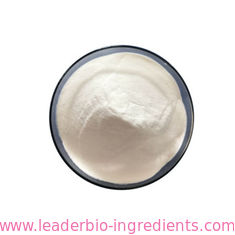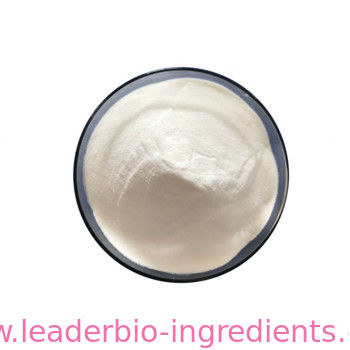| 1-Hexadecanol Basic information |
| |
| 1-Hexadecanol Chemical Properties |
| Melting point |
49-51 °C |
| Boiling point |
344 °C |
| density |
0.818 g/mL at 25 °C(lit.) |
| vapor density |
8.34 (vs air) |
| vapor pressure |
<0.01 mm Hg ( 43 °C) |
| FEMA |
2554 | 1-HEXADECANOL |
| refractive index |
nD79 1.4283 |
| Fp |
275 °F |
| storage temp. |
2-8°C |
| solubility |
Soluble in alcohol, chloroform, r |
| pka |
15.20±0.10(Predicted) |
| form |
Powder, Flakes or Pellets |
| color |
White to off-white |
| explosive limit |
8% |
| Water Solubility |
insoluble |
| JECFA Number |
114 |
| Merck |
14,2028 |
| BRN |
1748475 |
| Stability: |
Stable. Incompatible with strong oxidizing agents, strong acids. |
| CAS DataBase Reference |
36653-82-4(CAS DataBase Reference) |
| NIST Chemistry Reference |
1-Hexadecanol(36653-82-4) |
| EPA Substance Registry System |
1-Hexadecanol (36653-82-4) |
| |
| 1-Hexadecanol Usage And Synthesis |
| Description |
1-Hexadecanol is odorless. |
| Chemical Properties |
1-Hexadecanol is odorless. |
| Chemical Properties |
white solid |
| Chemical Properties |
Cetyl alcohol occurs as waxy, white flakes, granules, cubes, or castings. It has a faint characteristic odor and bland taste. |
| Originator |
Hexadecyl alcohol,Esso Res. And Eng. Co. |
| Occurrence |
Reported as a major constituent of spermaceti oil, where it is present chiefy as cetyl palmitate Also reported found in guava, peach, pear, kohlrabi, baked potato, mustard, Parmesan cheese, butter, milk powder, boiled egg, cooked chicken, roasted beef, beef fat, whiskies, tea, starfruit, mango, rice, licorice, kiwifruit, loquat, endive, shrimp, crab, clam, Cape gooseberry and pawpaw |
| Uses |
an emulsifier and emollient in cosmetics and pharmaceutical preparations. |
| Uses |
Pharmaceutic aid (emulsifying and stiffening agent). |
| Uses |
cetyl alcohol is a versatile ingredient that can serve as an emollient, emulsifier, thickener, binder, foam booster, or emulsion stabilizer, depending on the formulation and need. It is derived from nut or palm oil as well as being synthetically manufactured. It is considered by some sources to be a non-comedogenic material. |
| Definition |
ChEBI: A long chain fatty alcohol that is hexadecane substituted by a hydroxy group at position 1. |
| Production Methods |
Cetyl alcohol may be manufactured by a number of methods such as esterification and hydrogenolysis of fatty acids or by catalytic hydrogenation of the triglycerides obtained from nut oil or tallow. Cetyl alcohol may be purified by crystallization and distillation. |
| Manufacturing Process |
1). A slurry of sodium bicarbonate comprising 39.8 g sodium bicarbonate and 254 ml water was placed in an autoclave. 96.3 g hexadecyl bromide and 635 ml were then added. The autoclave was sealed and while stirring (590 r.p.m.) it was heated to a temperature of 218°C over a period of 1 hour 15 min. The temperature was maintained at 218-220°C for an additional hour. At the end of the reaction the autoclave was cooled to about 50°C, that is, to a temperature at which the alcohol remains molten. The autoclave was then rinsed with and 1 N hydrochloric acid add to neutralize the sodium bicarbonate. The reaction mixture was diluted with an equivalent volume of water and then extracted with n-pentane. (Other suitable water insoluble solvents such as benzene, carbon tetrachloride, chloroform, petroleum r and the like can be used for extraction). The pentane extract was washed with water and then dried over magnesium sulfate. The dried solution was filtered and evaporated. The residue was melted and a vacuum applied to remove the last traces of pentane. On distillation a yield of 94.8% of the theoretical yield white crystals of hexadecanol was recovered; M.P. 49°C, B.P. 344°C, nD79 = 1.4283.
2). 5.80 g of hexadecyl bromide, 36 ml of 60% aqueous dioxane and 0.73 g of calcium oxide were placed in an ampoule. The ampoule was then heated, while shaking, to a temperature of 220°C over a period of 0.5 hours, and maintained at this temperature for 1 hour. After the reaction the ampoule was cooled and the products worked up as in method 1. Analysis for alcohol content by Zerewitinoff active hydrogen determination showed the yield to be 92.5%; M.P. 49°C, B.P. 344°C, nD79 = 1.4283.
3). A solution of palmitoyl chloride in dioxane was added dropwise to a cooled dispersion of sodium borohydride.The mixture was heated on the steam bath for a short time and then, after cooling, water was added. On distillation a yield of hexadecanol 87%, M.P. 49°C, B.P. 344°C. |
| Therapeutic Function |
Pharmaceutic aid |
| Synthesis Reference(s) |
The Journal of Organic Chemistry, 42, p. 512, 1977 DOI: 10.1021/jo00423a025
Synthetic Communications, 25, p. 1901, 1995 DOI: 10.1080/00397919508015865
Tetrahedron Letters, 24, p. 4485, 1983 DOI: 10.1016/S0040-4039(00)85933-X |
| Pharmaceutical Applications |
Cetyl alcohol is widely used in cosmetics and pharmaceutical formulations such as suppositories, modified-release solid dosage forms, emulsions, lotions, creams, and ointments.
In suppositories cetyl alcohol is used to raise the melting point of the base, and in modified-release dosage forms it may be used to form a permeable barrier coating. In lotions, creams, and ointments cetyl alcohol is used because of its emollient, water-absorptive, and emulsifying properties. It enhances stability, improves texture, and increases consistency. The emollient properties are due to absorption and retention of cetyl alcohol in the epidermis, where it lubricates and softens the skin while imparting a characteristic ‘velvety’ texture.
Cetyl alcohol is also used for its water absorption properties in water-in-oil emulsions. For example, a mixture of petrolatum and cetyl alcohol (19 : 1) will absorb 40–50% of its weight of water. Cetyl alcohol acts as a weak emulsifier of the water-in-oil type, thus allowing a reduction of the quantity of other emulsifying agents used in a formulation. Cetyl alcohol has also been reported to increase the consistency of water-in-oil emulsions.
In oil-in-water emulsions, cetyl alcohol is reported to improve stability by combining with the water-soluble emulsifying agent. The combined mixed emulsifier produces a close packed, monomolecular barrier at the oil–water interface which forms a mechanical barrier against droplet coalescence.
In semisolid emulsions, excess cetyl alcohol combines with the aqueous emulsifier solution to form a viscoelastic continuous phase that imparts semisolid properties to the emulsion and also prevents droplet coalescence. Therefore, cetyl alcohol is sometimes referred to as a ‘consistency improver’ or a ‘bodying agent’, although it may be necessary to mix cetyl alcohol with a hydrophilic emulsifier to impart this property.
It should be noted that pure or pharmacopeial grades of cetyl alcohol may not form stable semisolid emulsions and may not show the same physical properties as grades of cetyl alcohol that contain significant amounts of other similar alcohols. |
| Safety |
Cetyl alcohol is mainly used in topical formulations, although it has also been used in oral and rectal preparations.
Cetyl alcohol has been associated with allergic delayed-type hypersensitivity reactions in patients with stasis dermatitis. Crosssensitization with cetostearyl alcohol, lanolin, and stearyl alcohol has also been reported. It has been suggested that hypersensitivity may be caused by impurities in commercial grades of cetyl alcohol since highly refined cetyl alcohol (99.5%) has not been associated with hypersensitivity reactions.
LD50 (mouse, IP): 1.6 g/kg
LD50 (mouse, oral): 3.2 g/kg
LD50 (rat, IP): 1.6 g/kg
LD50 (rat, oral): 5 g/kg |
| storage |
Cetyl alcohol is stable in the presence of acids, alkalis, light, and air; it does not become rancid. It should be stored in a well-closed container in a cool, dry place. |
| Purification Methods |
Crystallise the alcohol from aqueous EtOH or from cyclohexane. Alternatively purify it by zone refining. The purity can be checked by gas chromatography. [Beilstein 1 H 429, 1 I 219, 1 II 466, 1 III 1815, 1 IV 1876.] |
| Incompatibilities |
Incompatible with strong oxidizing agents. Cetyl alcohol is responsible for lowering the melting point of ibuprofen, which results in sticking tendencies during the process of film coating ibuprofen crystals. |
| Regulatory Status |
Included in the FDA Inactive Ingredients Database (ophthalmic preparations, oral capsules and tablets, otic and rectal preparations, topical aerosols, creams, emulsions, ointments and solutions, and vaginal preparations). Included in nonparenteral medicines licensed in the UK. Included in the Canadian List of Acceptable Nonmedicinal Ingredients. |
| |
| 1-Hexadecanol Preparation Products And Raw materials |
|

